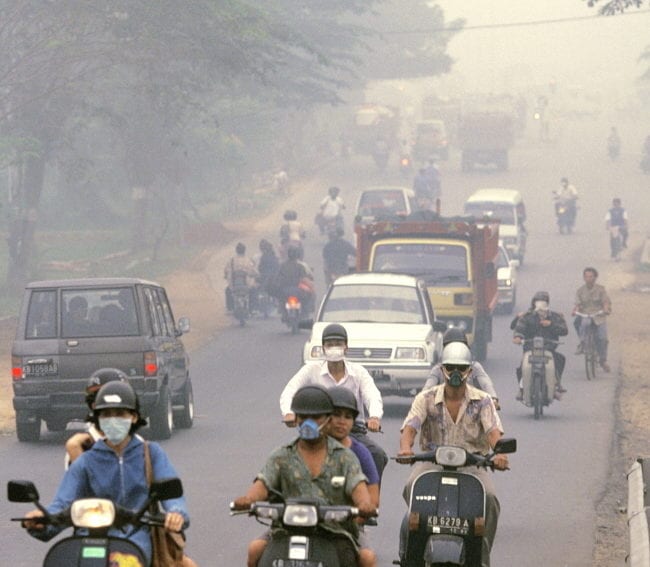By: Prime Sarmiento
Send to a friend
The details you provide on this page will not be used to send unsolicited email, and will not be sold to a 3rd party. See privacy policy.
[MANILA] South-East Asia is again experiencing haze problems — the worst in the last two decades — spurring calls for tougher policies and a regional solution to stop once and for all slash-and-burn practices harming both human health and the environment.
Satellite feeds have already recorded over 1,000 fire alerts as of 8 September, exceeding the highest peaks of the last two years, reports the Washington-based World Resources Institute (WRI).
The haze was caused by the illegal burning of forest land for oil palm and pulp plantations in Kalimantan and Sumatra, inducing air pollution not only in Indonesia but neighbouring Singapore, Malaysia and Brunei. The haze has shut down airports and schools and caused respiratory health problems. This year’s strong El Niño compounded the problem as the dry weather leads to more fire outbreaks.
“The persistence of the haze… will ultimately be determined by the response of the government and the companies and communities that manage land.”
By Susan Minnemeyer of WRI
The Indonesian National Disaster Management Authority says it will be able to control most of the forest fires by mid-October but experts interviewed by SciDev.Net urge long-term solutions to prevent forest and land burning.
“The persistence of the haze will depend on many things, including weather patterns, but will ultimately be determined by the response of the government and the companies and communities that manage land,” says Susan Minnemeyer, WRI geographic information systems manager.
She stresses that unless there is strong enforcement against those who burn land and hold them accountable, the fires and haze will continue whenever the weather is dry enough.
“The government should prioritise efforts to prevent fires in the first place through sustained engagement with local farmers and local governments to address conflicts over land,” she adds.
Apart from more effective law enforcement, Minnemeyer says Indonesia needs to map out its land and resource ownership and responsibilities. Satellite monitoring and real-time information can help government agencies identify areas to prioritise and quell forest fires as soon as possible.
Herry Purnomo, senior scientist at the Center for International Forestry Research based in Bogor, Indonesia, says the impact of this year’s haze is even worse than in 1997 when an El Niño ignited forest fires.
“The ecosystem resilience today is not as good as in 1997. Deforestation and forest degradation have lessened the adaptive capacity of the ecosystem and local communities to human-made and natural disasters,” Purnomo notes.
Apart from firefighting and cloud seeding to control forest fires, Indonesia has been stepping up its enforcement. Police arrested on 16 September seven executives of paper pulp and palm oil companies who were allegedly connected with illegal forest fires that caused the haze.
Singaporean foreign affairs minister K. Shanmugam says “greater regional efforts and cooperation were needed to effectively combat the haze problem”.
The minister said in a statement on 18 September that all state signatories should meet their commitments under the ASEAN Agreement on Transboundary Haze, including setting up a haze monitoring system.
Indonesia and Malaysia will also sign a memorandum of understanding listing down four steps to overcome haze — law enforcement, zero-burning practice for Indonesia, peat soil management and collaboration.
Indonesia is expected to sign similar agreements with Brunei, Singapore and Thailand.
This article has been produced by SciDev.Net's South-East Asia & Pacific desk.














